Massimo Papi1,2,3*, Elena Bressanin4
1National Reference Person ADOI (Association of Italian Hospital Dermatologists) for the Study Group of Skin Ulcers and Vascular Dermatology, Rome, Italy
2Associate Editor International Journal Lower Extremities Wounds (IJLEW), Italy
3Conceiver of the Project Dermart, Founder of the Association Dermart, Italy
4Aesthetic Medicine, Italy
*Correspondence author: Massimo Papi, National Reference Person ADOI (Association of Italian Hospital Dermatologists) for the Study Group of Skin Ulcers and Vascular Dermatology, Rome, Italy; Email: [email protected]
Published Date: 18-09-2024
Copyright© 2024 by Papi M, et al. All rights reserved. This is an open access article distributed under the terms of the Creative Commons Attribution License, which permits unrestricted use, distribution, and reproduction in any medium, provided the original author and source are credited.
Abstract
The observation of the nails represented in art masterpieces encourages to catch details which allow us to suspect skin disorders of the past, still commonly encountered in our daily clinical activity. Nails are cutaneous annexes reflecting the state of health and unveiling, through their alterations, the presence of specific systemic and cutaneous diseases, as well as the damage which environmental factors and some cosmetic procedures may cause. In the works of visual arts, there are several examples of nail alterations, either related to the job of the models illustrated by the artist (e.g., traumas from heavy activity) or representing signs of concomitant diseases. The works of art also allow to outline a sort of history of nails and of the social meaning nails have been given to and at the same time, they show biological and pathological aspects of human beings and their health, social and religious characteristics. The careful analysis of the nails in the masterpieces of visual art may improve our observational skills and create a direct relationship with the subject that has been portrayed. The manuscript is focused on the main nail alteration decoration which can be observed in the history of art.
Keywords: Nails; Cosmetic Procedures; Concomitant Diseases; Skin Disorders
Introduction
During the evolution, nails have lost their functional meaning for human beings and have acquired, especially in the last decades, a progressively increasing esthetic and decorative value.
At the end of the 19th century, the first nail center opened in New York: it was the beginning of a new era and the birth of the nail industry [1].
Nails are cutaneous annexes, reflecting the state of health and expressing, through their alterations, some specific systemic and cutaneous diseases, as well as the damages, which environmental factors and some cosmetic procedures may cause [2].
In the works of visual arts, there are several examples of nail alterations, partly due to the jobs of the models portrayed by the artist (traumas from heavy activity, traces of residual materials) and in some cases, they can be interpreted as the sign of present diseases.
However, the works of art also allow to outline a sort of history of nails and of the social meaning nails have been given. In addition, they show biological and pathological aspects of human beings and their medical, social and religious characteristics [3].
The history of art shows frequently details that can be useful for our dermatological daily activity and can stimulate and improve our observational skills [4].
Introduction
During the evolution, nails have lost their functional meaning for human beings and have acquired, especially in the last decades, a progressively increasing esthetic and decorative value.
At the end of the 19th century, the first nail center opened in New York: it was the beginning of a new era and the birth of the nail industry [1].
Nails are cutaneous annexes, reflecting the state of health and expressing, through their alterations, some specific systemic and cutaneous diseases, as well as the damages, which environmental factors and some cosmetic procedures may cause [2].
In the works of visual arts, there are several examples of nail alterations, partly due to the jobs of the models portrayed by the artist (traumas from heavy activity, traces of residual materials) and in some cases, they can be interpreted as the sign of present diseases.
However, the works of art also allow to outline a sort of history of nails and of the social meaning nails have been given. In addition, they show biological and pathological aspects of human beings and their medical, social and religious characteristics [3].
The history of art shows frequently details that can be useful for our dermatological daily activity and can stimulate and improve our observational skills [4].
Nails and Fine Arts
“Ex ungue leonem” is the natural comment of the dramatic painting by Gericault Lion attacking a white horse (1820), in which the finality of the nails in the animals is clearly showed. Life without claws would be a disaster for lions! The model for Gericault was the Hellenistic sculpture of ancient Rome modified by a student of Michelangelo in 1594 and now in the Capitolini Museum of the Municipality of the city (Fig. 1).
The use of the hands to assure food and safety was also based on the presence of sharp nails as other animal species have. Humans lost this peculiarity because they became able to use instruments and weapons.
The Harpies, half-woman and half-bird mythological creatures, were depicted with sharp and claw-like nails as raptors and kidnappers of souls. Their image appears in many works of art including Leoncillo Leonardi’s Harpia (1939), a big ceramic exhibited at the Gallery of Modern Art of Rome (Fig. 2). Leonardi, born in Spoleto, has worked in Rome for a long time.
Also, Gustave Dorè describes the Harpias with the beak nails, in the incision illustrating the XIII Canto of the Divina Commedia by Dante Alighieri (Fig. 3).
“Here the brute Harpias make their nest”, Dante says. It is the Canto of the Hell in which he describes suicidals. The presence of Harpias is explained with the fact that they ate the leaves of the trees in which the suicidal’s souls were prisoner and the result was an intense pain of these latter.
A masterpiece of art arousing great interest and debate is the Isenheim Altarpiece by Matthias Grunewald (1512-16) (Fig. 4). The Christ of Isenheim is now in the Unterlinden museum of Colmar (Alsace) and is part of a formidable polyptych of nine pieces. The identification of the peasants affected with ergotism with this suffering (dead) Christ that has on his body all the markers of their disease and of the human sufferance, made their illness less awful, was thaumaturgic and considered miraculous. In the Deposition of Christ, painted on the predella of the altar, Christ shows several linear marks on the skin (lashing wounds? itching lesions?) his toenails are dark and the fingernails are black (Fig. 5,6). The Isenheim’s Christ was the subject of great veneration, during the 18th and 19th centuries, by the peasant population of Alsace, who due to climate conditions were fed on bread and wheat-rye derivatives contaminated with fungi (horned rye) and fell ill with ergotism [5,6]. The epidemies of ergotism were very common in Europe between the XI and the XIII century. They progressively decreased after the XVII century but were described until the early decades of XX century.
Claviceps purpurea is an ascomycete whose common name is ergot. This term is the same one used in French, a language in which, literally, it means spur. In fact, this species of the genus Claviceps (which counts about fifty) is a parasite of grasses and the shape of sclerozi like spurs or croissants that give the infected plant, often the rye, the common name of horned rye. This species is the most studied and known for its important effects in the contamination of wheat made with infected rye. The bread made from the ergot-infested wheat contained many poisonous or psychoactive alkaloids of the ergotine group (including lysergic acid), which have various types of effects on people that eat them. These alkaloids, being vessel-constrictors, compromise circulation. They also interact with the central nervous system, acting in particular on serotonin receptor [7,8].
The symptoms of ergotism were mostly related to the damages to the vascular system, the nervous system (hallucinations) and the skin (itching). Ergotism was often fatal and had devastating effects on the affected community. It developed in two main forms: convulsive ergotism, characterized by convulsive symptoms of an epileptic nature or gangrenous ergotism, causing gangrene to extremities (Fig. 6) [9].
It is likely, that the dark nails, typical of peripheral vascular diseases, were portrayed by Grunewald in order to create a strong identification among those who prayed to heal their diseases [10,11].
I believe that the dark nails of the Deposition of Christ in the predella, may be one of the signs of the vascular variety of ergotism, which in the most severe form induced gangrene, loss of the distal parts of the limbs or mummification.
In The Peasant Wedding by Peter Bruegel (1568) (Fig. 7), in the Beans Eater by Annibale Carracci (1584-6) (Fig. 8), as well as in several works by Caravaggio (Judith Beheading Holofernes, 1598. The incredulity of Saint Thomas, 1601 – The Taking of Christ, 1602. Pilgrim’s Madonna, 1606. The Denial of Saint Peter 1610, some of the portrayed characters have dystrophic nails, presenting with longitudinal streaks and traces of dirt. It is particularly impressive to observe the detail of the Pilgrim’s Madonna (Fig. 9,10) toenails, which are truly pathological [10]. They may be interpreted as nail infected with fungi due to hyperkeratotic aspects and their yellowish discoloration [12].
The extraordinary realism and attention to details of the masters of painting can be seen also in these particulars. Physicians can read in the nails the signs of organ/systemic diseases, going from eating disorders and nutrient-absorption alteration (vitamins, aminoacids, oligoelements), to thyroid anomalies, renal function damage (half and half nails) and iron-deficiency anemia, where nails lose their convexity and become spoon-like (koilonychia). The painting reminding of this latter disease is The Dean of the College of Cardinals, by the Italian painter Scipione (Gino Bonichi). Scipione was active in the Roman School of painting until 1933 when he prematurely died. He was fascinated by the spiritual power of 94-year-old Cardinal Vannutelli and he portrayed him, a still energetic man, symbol of a city – Rome – that is not the same anymore and where everything changes except for the color of the sunsets – so dear to Scipione. In the painting, the Cardinal’s skinny and elongated hands show spoon nails (Fig. 11,12) which makes us strongly suspect that the old and honorable Cardinal could have suffered at least from iron deficiency.
Streaked and grey nails, expressing a poor state of health, are those we see (long and sharp) in Salvador Dali – The Sick Child – Self-portrait in Cadaques (1920) or those (yellowish grey) in Caravaggio Self-portrait as Bacchus (sick Bacchus) (1593).
Psoriasis and lichen planus take the lion’s share of skin diseases associated with nail alterations [13,14]. In Fausto Pirandello’s work Nude on a white background (1927), the woman’s enlarged nails suggest nail psoriasis (Fig. 14,15). There are no other signs of the disease in the woman’s body, but obesity – a predisposing factor – is evident. On the other hand, lichen planus, possibly associated with anemia and eventually with thyroidal disfunction, may be suspected in the models of Hans Memling, author of wonderful portraits. In the Portrait of Barbara Vlanderbergh (1460) and in the Portrait of Maria Portinari (1470) (Fig. 15,16), nails seem to be dystrophic and with rough hollows and streaks, as we observe in patients with lichen planus or anemia. In some specific cases, lichen may also affect the nails and the oral cavity, in addition to the well-known violaceus papular lesions of preferential areas of the skin. This is what we would suspect if she was our patient.
Another interesting chapter is that of whitish nails, which, in dermatology daily practice, are often the sign of a fungal infection. In the works of art, we can only imagine that finger and toe nails of the portrayed models were swarming with fungi. Sometimes, however, the white color is only an artistic symbol, as it happens in many works by Egon Schiele (1890-1918). In his self-portraits the nails are often white or cream-colored, but also his models are portrayed with pale or definitely white nails. White is the symbol color for the absence of blood, cold and vasoconstriction. It is finally the marker of death and of the tragedies of the 20th century, when we look at the nails in the desperate gestures or in the limbs of the unfortunate characters of Picasso’s Guernica (1936).

Figure 1: Capitolini Museum of Rome, The lion attacks a horse Hellenistic sculpture.
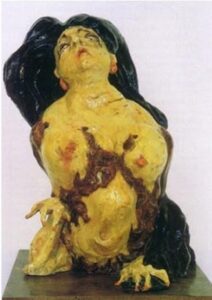
Figure 2: Leoncillo, Harpia 1939.
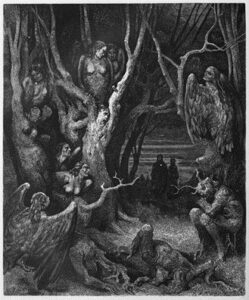
Figure 3: G Dorè, Harpias XIII Canto Divina Commedia 1861.

Figure 4: M Grunewald, Christ of Isenheim 1512-16.
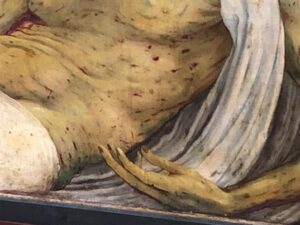
Figure 5: M Grunewald, Lamentation of Christ Predella of Isenheim, particular 1512-16.
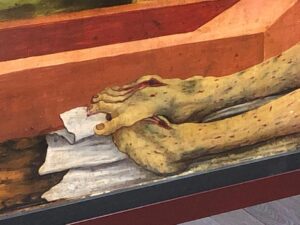
Figure 6: M Grunewald, Lamentation of Christ Predella of Isenheim, particular 1512-16.
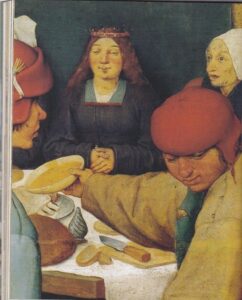
Figure 7: P Bruegel, Peasant wedding 1568, particular.
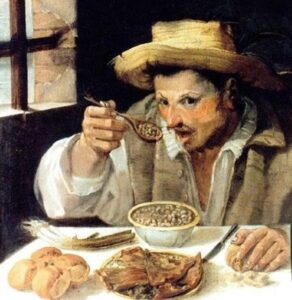
Figure 8: A Carracci, Beans eater 1584-86.
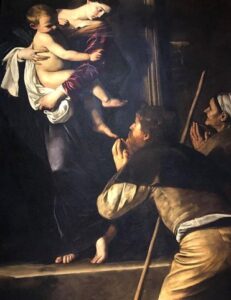
Figure 9: Caravaggio, Pilgrims Virgin 1604-06.
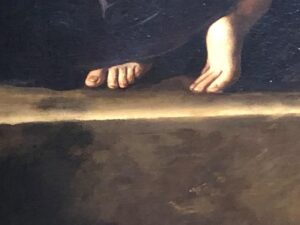
Figure 10: Caravaggio, Pilgrims Virgin 1604-06, particular of the toe nails.
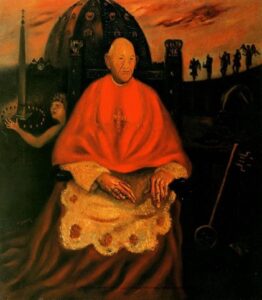
Figure 11: G Bonichi (Scipione), Dean of the Cardinals 1930.

Figure 12: G Bonichi (Scipione) Dean of the Cardinals 1930. Spoon nails, particular.

Figure 13: F Pirandello, Nude on a white background 1927.

Figure 14: F Pirandello, Nude on a white background,particular of the nails [2].
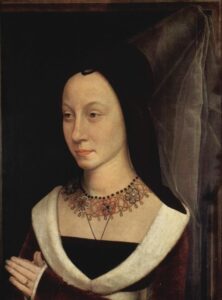
Figure 15: H Memling, Portrait of Maria Portinari 1470-1480.
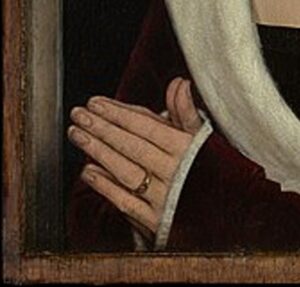
Figure 16: H Memling, Particular of the nails of Maria Portinari.
Nail Art and Cosmetics
Nail art is at present one of the trendiest form of cosmetics for women. There are nail artists that are experts of specific modality of nail decoration. Despite their limited surface, the nail decorators reproduce any kind of image on the nails, including painting masterpiece. The subjects differentiate in relation to cultures and geographic sites. The industry of nails, initiated at the end of XXth century, has become a huge economical voice of cosmetics.
However, one of the very first examples of nail decoration come from India, where, starting from 5000 B.C., women used to color their fingertips with henna.
According to historians and archeologists, nail polish was created in China 3000 years ago and it was and still is used by the richer social classes as a distinctive sign. The components of these polishes were virgin wax, egg white, jelly, gum Arabic and vegetal pigments. Preferred colors were gold and silver and the nails were kept very long, as a symbol of richness and ease and protected with golden covers (Fig. 17).
In China, the first, rudimentary example of nail lengthening makes its appearance. The aristocratic dynasty of the Zhou has the habit of using small jewel-armours to protect the very delicate ends of their fingers. Wearing these luxurious protections clearly makes you unfit for manual labour, thus indicating belonging to an upper class. Protective breastplates are tipically decorated with metals and precious stones and adorned with symbols of auspicious animals, such as frogs and crickets.
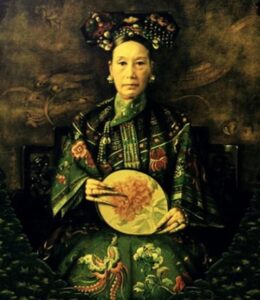
Figure 17: Portrait of Cíxǐ the last Emperor of China 1900.
Women would also create intricate designs, such as flowers, dragons and landscapes, to express their creativity and individuality. These designs often required a high level of skill and precision and were admired as works of art [1].
Also in Egypt, there was the habit of coloring nails. The Egyptians’ methods were different from the Chinese ones, but the color indicated the social rank, with dark red used by the highest ranks.
Cleopatra and Nefertiti, two great queens, who were also queens of seduction, loved henna for coloring their nails. Cleopatra preferred shades of crimson, whereas Nefertiti used ruby red.
Nail art appeared again during Renaissance, when we find the first products for hands care. At the same time, even the Incas had the habit of painting the nails with colors ranging from gold to black and green. Furthermore, they embellished them with decorations in the shape of an eagle, the symbol of strength and power.
In the last decades, the nails have been increasingly painted and used as an artistic surface and the possibilities to decorate them is huge. The risk of damages due to the use of synthetic substances remains the limit of this fascinating practice (Table 1).
5000 years ago, Indian women (henna) |
3000 years ago, Chinese (lacquers), Egyptian (henna) |
Mid 1800s, polish (powder paste) |
End 1800s, first nail center in New York |
Silent film divas, Michelle Menard esthetician. The “manicure” was born |
Max Factor, Revlon nail polish |
In 1934, Maxwell Lappe (dentist) created the first artificial nails for those who had short and untidy nails and in 1937 the first patent for nail extension technique was registered |
1937 Harriet Fliegenbaum: extension and reconstruction |
70s: beginning of the nail art |
1981: UV gel for nail reconstruction |
2000s: innovative gel nails |
Table 1: Summary of the main stages of nail cosmetics and esthetics.
Conflict of Interests
The author declares that there is no conflict of interest for this paper.
References
- Shapiro SED. The story of the modern manicure. Prestel Ed. 2014.
- Tosti A, Daniel R, Piraccini BM, Iorizzo M. Color atlas of nails. Springer Science and Business Media. 2009.
- Papi M, Didona B. Dermart: Dermatology between science and art. Mazzotta Ed., Milano. 2012.
- Papi M. The importance of the details: The curious dermatologic story of the virgin and child with canon van der Paele by van Eyck. Clin Dermatol. 2021;1095-99.
- Huysmans JK. Les Grunewald du muse de Colmar. Musee Unterlinden, Colmar. 2018.
- Beguerie-De Paepe P, Haas M. The Isenheim altarpiece. Musee Unterlinden. 2018.
- Seal DV, Hay RJ, Middleton KR. Skin and wound infection. M Dunitz. 2000.
- Papi M, Papi C. Vasculitic ulcers. Int J Low Extr Wounds. 2016,1:6-16.
- Liegl CA, McGrath MA. Ergotism: case report and review of the literature. Int J Angiol. 2016;25:e8-11.
- Kandel ER. The age of insight. Random House Ed. 2012.
- Guarnera G, Papi M. L’ulcera cutanea degli arti inferiori. Monti. 2000.
- Piraccini BM, Alessandrini A. Onychomycosis: a review. J Fungi (Basel). 2015;1(1):30-7.
- Maddy AJ, Tosti A. What’s new in nail disorders. Dermatol Clin. 2019;37(2):143-7.
- Lee DK, Lipner SR. Optimal diagnosis and management of common nail disorders. Ann Med. 2022;54(1):694-712.
Article Type
Review Article
Publication History
Received Date: 25-08-2024
Accepted Date: 11-09-2024
Published Date: 18-09-2024
Copyright© 2024 by Papi M, et al. All rights reserved. This is an open access article distributed under the terms of the Creative Commons Attribution License, which permits unrestricted use, distribution, and reproduction in any medium, provided the original author and source are credited.
Citation: Papi M, et al. The Nails in Fine Arts. J Dermatol Res. 2024;5(3):1-13.

Figure 1: Capitolini Museum of Rome, The lion attacks a horse Hellenistic sculpture.

Figure 2: Leoncillo, Harpia 1939.

Figure 3: G Dorè, Harpias XIII Canto Divina Commedia 1861.

Figure 4: M Grunewald, Christ of Isenheim 1512-16.

Figure 5: M Grunewald, Lamentation of Christ Predella of Isenheim, particular 1512-16.

Figure 6: M Grunewald, Lamentation of Christ Predella of Isenheim, particular 1512-16.

Figure 7: P Bruegel, Peasant wedding 1568, particular.

Figure 8: A Carracci, Beans eater 1584-86.

Figure 9: Caravaggio, Pilgrims Virgin 1604-06.

Figure 10: Caravaggio, Pilgrims Virgin 1604-06, particular of the toe nails.

Figure 11: G Bonichi (Scipione), Dean of the Cardinals 1930.

Figure 12: G Bonichi (Scipione) Dean of the Cardinals 1930. Spoon nails, particular.

Figure 13: F Pirandello, Nude on a white background 1927.

Figure 14: F Pirandello, Nude on a white background,particular of the nails [2].

Figure 15: H Memling, Portrait of Maria Portinari 1470-1480.

Figure 16: H Memling, Particular of the nails of Maria Portinari.

Figure 17: Portrait of Cíxǐ the last Emperor of China 1900.


